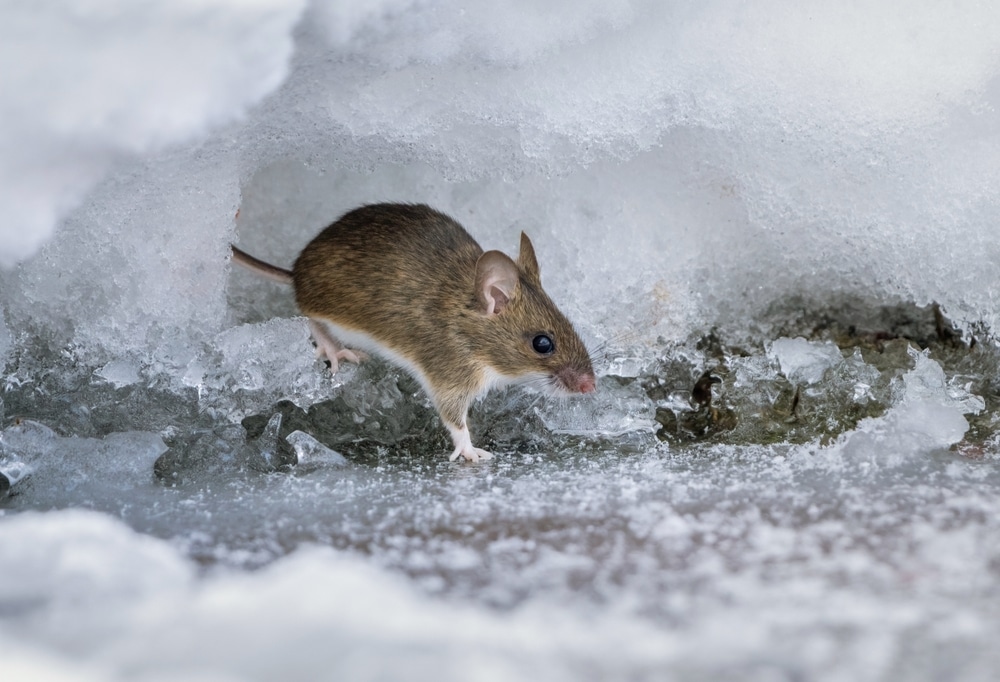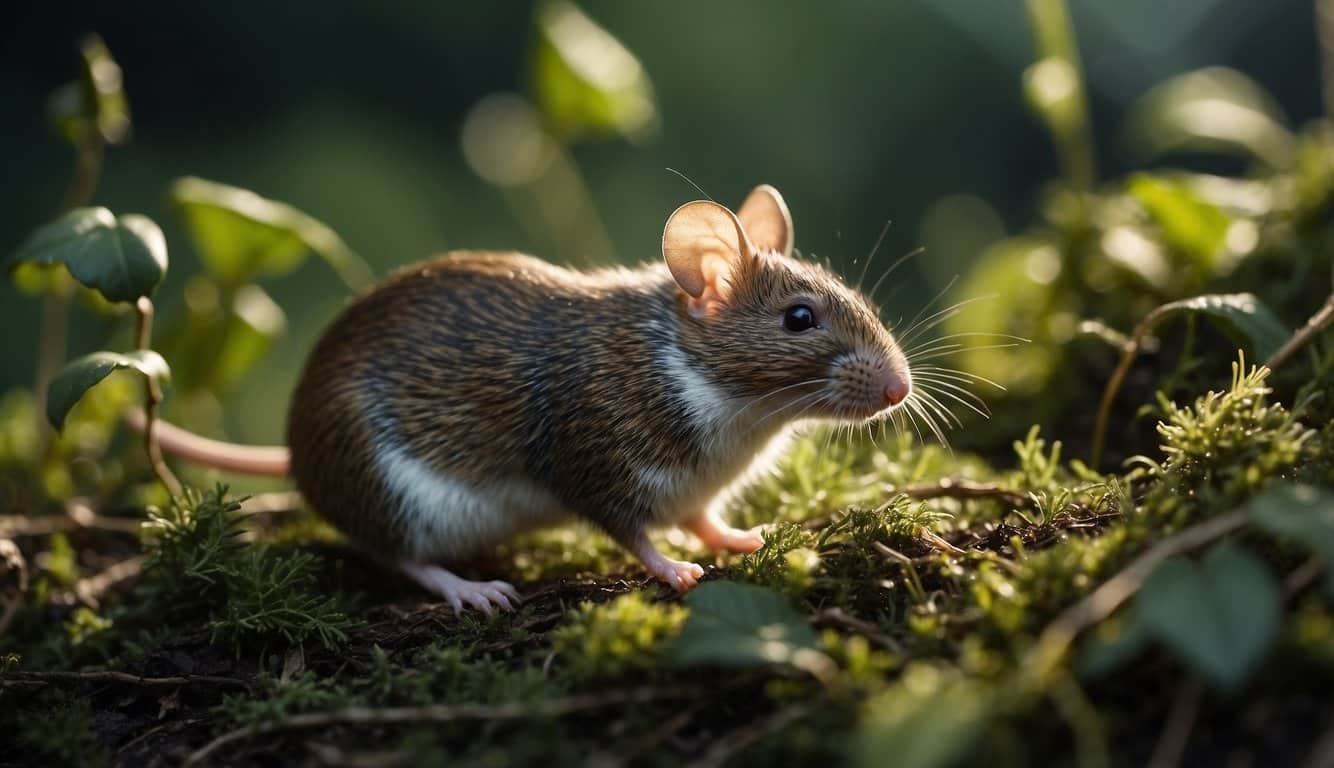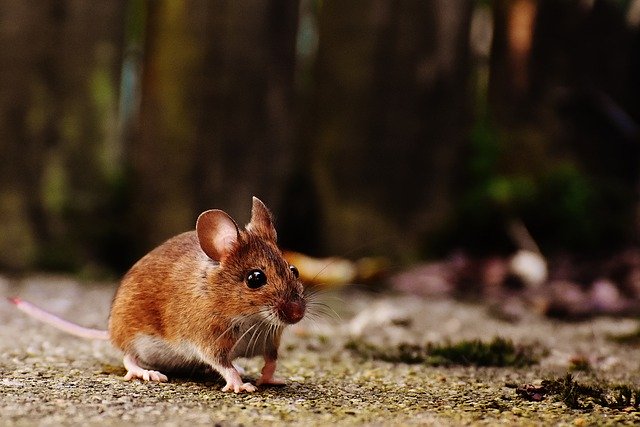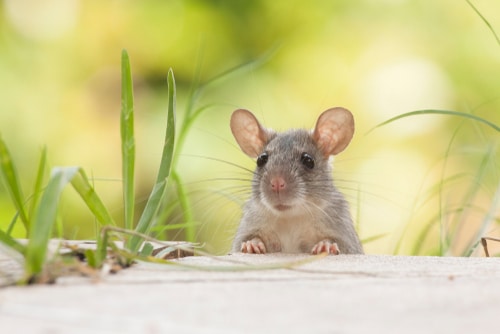Mice Habitats Around the World
From bustling cities to remote forests, mice have made themselves at home across the globe.
Let’s scurry through their various habitats and see where these resourceful rodents reside.
Continental Dwellers: Mice on Different Landmasses
Mice have a knack for travel, or at least for hitching a ride with us humans, and you’ll find them on nearly every landmass.
Here’s a quick list of where these whiskered explorers thrive:
- Eurasia and Africa: Native zones where they scamper from the lowlands to lofty mountaintops.
- Americas: Whether in the deep wilds or within human dwellings, mice have adapted to the New World.
- Oceania: Introduced species that have now become part of the region’s ecological tapestry.
- Arctic Regions: Even in colder climates, certain hardy species make do with what the frosty landscapes offer.
Mice in the Wild: Forests and Fields
Step into nature, and you’ll discover that mice are as much a part of the wilderness as the trees and flowers.
In their natural settings, mice tend to favor:
- Forests: Offering shelter and seeds galore, woods are wonderlands for mice.
- Grasslands: Open spaces where mice can burrow and feast on plentiful plant matter.
- Wetlands: Muddy marshes might not seem ideal, but mice find both food and cover in these waterlogged lands.
Urban Mice: Cities and Suburbs
Your own backyard might be more of a wild kingdom than you realize.
In urban environments, mice are the unseen neighbors who’ve adapted to living alongside humans. They’re particularly fond of:
- Houses and buildings: Where there’s warmth and potential for crumbs, you bet mice will be there.
- Subways and sewers: Underground networks make for prime mice highways, with plenty of nooks to nestle into.
Nesting and Shelter Preferences of Mice
When you’re exploring the great outdoors, you might not think much about the cozy homes mice create for themselves. These little architects have specific preferences when it comes to where they nest and take shelter.
Let’s break it down:
- Burrows Galore: Field mice, such as those lively little creatures darting in and out of your garden, are particularly fond of burrowing into the ground. They create intricate tunnels and chambers for nesting, storing food, and escaping from predators. You’ll find these burrows in areas with ample ground cover like fields and grassy areas.
- Forest Fans: Woodlands and forests are like five-star resorts to field mice. They love the buffet of food and natural shelters it provides. Their nests are often hidden in dense vegetation or piles of leaf litter, keeping them safely out of sight.
- Water Babies: Believe it or not, some mice even settle down near bodies of water. Moisture is a big draw for them, making wetlands, marshes, and riverside locales popular choices for these tiny rodent residents.
- Arboreal Adventures: Yes, you read that right—some mice are tree huggers! Extended tails assist their climbing escapades, and they often build cozy nests up high or within tree cavities, depending on the species.
Survival Skills: How Mice Thrive in Various Environments
Mice aren’t just survival experts; they’re the Houdinis of the animal kingdom. Whether it’s snagging a midnight snack or dodging sharp-eyed predators, their knack for staying alive is practically an art form.
Foraging Strategies
- Always Be Scouting: Your typical mouse doesn’t just stumble upon a meal; they’ve got a forager’s intuition that makes Sherlock envious.
- They use their whiskers to feel out grains and seeds in pitch darkness.
- Remarkably, mice remember food locations and paths with spatial memory sharper than a GPS.
- Eat Now or Forever Hold Your Peace: Mice don’t get picky with their food; they’ll munch on just about anything from seeds to crumbs under your fridge.
- Their omnivorous diet keeps options open, whether in a forest or a pantry.
Predator Evasion Techniques
- Sprint or Hide? Both: You might think you’re quick, but mice take evasion to Olympic levels.
- Dash and Dodge: They can reach up to 8 mph—look away, and poof, they’re gone.
- Camouflage: With fur that blends into their surroundings, mice are maestros of hide-and-seek.
- Social Signals Save Skin: One mouse’s squeak can send the whole crew scurrying.
- Alert calls communicate danger faster than a mouse meme.
Climatic Adaptations
- Facing the Frost: Yes, mice can feel their whiskers freeze, but they’ve got tricks to beat the chill.
- They bulk up with thicker fur and slow down metabolism for energy conservancy.
- Beating the Heat: When the mercury rises, expect a mouse to dig in—literally.
- Burrowing into cool soil or finding shade, they know how to chill when life turns up the heat.
Mice Species and Their Unique Domiciles
When you think of mice, you might envision them scurrying around your home, but they have a wide variety of habitats. Let’s zip through some mouse species and discover just how diverse their living quarters can be.
Field Mice: Meadows and Grasslands
- Preferred Landscapes: These critters are true connoisseurs of open spaces. They thrive in meadows, fields, and grasslands where they can play hide-and-seek amongst the vegetation.
- Typical Homes:
- Burrows: Cozy underground nests shielded from predators.
- Grass Nests: On the surface, built from the bounty of the land.
House Mice: Human Dwellings
- Urban or Rural?: Does not matter! These mice are the uninvited guests no matter where you live.
- Residence of Choice:
- Nooks and Crannies: behind walls, under floors, or any other hidey-hole they can squeeze into.
- Nests: Made from shredded paper or other fibrous material found in human homes.
Deer Mice: Woodlands and Brush
- Favored Terrain: They are lovers of the great outdoors, particularly woodlands, forests, and shrubby areas.
- Habitat Setup:
- Tree Hollows & Ground Burrows: Both are top choices for these resourceful rodents.
- Nest Materials: A blend of natural fibers, creating a snug retreat.
The Impact of Seasons on Mice Habitats
You’ve probably noticed how the weather affects your own activity level—when it’s cold, you may prefer to stay indoors, but with the warmth of spring, the lure of the outdoors is irresistible. Well, mice are not so different! Their habitats and behavior patterns undergo fascinating changes with the coming of each season.
Winter Woes & Warmth:
- Snuggle Spots: During the colder months, mice search for warmth, often squeezing into your home to escape the chill.
- Scarcity Survival: With resources scarce, they’re forced into a game of hide-and-seek for sustenance, often inside walls or attic spaces.
Spring & Summer Shenanigans:
- Nest Quest: Warmer weather means mice are out and about, constructing nests in tall grasses or burrows.
- Food Frenzy: Nature’s buffet is open for business—seeds, insects, and fruits are plentiful.
Autumn Adjustments:
- Prep Time: Mice get busy gathering food and pulling together a cozy nest to prepare for the winter ahead.
- Final Forage: They capitalize on the autumnal abundance before the lean times arrive.
Frequently Asked Questions
In this section, you’ll find specific, concise answers to your burning questions about the habitats of mice.
What are the common habitats for mice in nature?
Mice adapt to various environments but are commonly found in places like fields, forests, and grasslands.
They seek out areas that provide shelter and food sources.
How do different seasons, like winter, affect where mice live outdoors?
During winter, mice look for warmth and tend to move closer to human dwellings or burrow deeper into the ground to escape the cold.
What signs indicate the presence of mice in residential areas?
Keep an eye out for droppings, bite marks on food packages, or nesting materials like shredded paper, which suggest that mice might be sharing your space.
In which ecosystems are mice most frequently found?
Mice are incredibly adaptable and are found in a variety of ecosystems, including urban environments, agricultural lands, grasslands, and forests.
How can one identify the specific areas where mice are nesting?
Look for small entry holes, grease marks on walls, or nests formed from fibrous materials.
These signs often lead to where mice are nesting in your vicinity.
What are the typical characteristics of a mouse’s burrow?
Mouse burrows often have multiple entrances and food storage areas. They are usually close to food sources and well hidden from predators.



